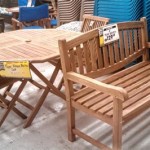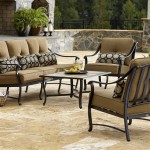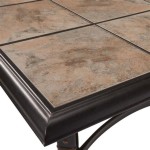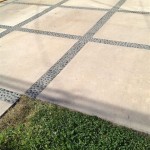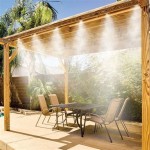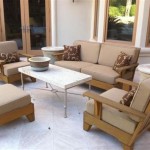Decorating a Patio with String Lights: An Illuminating Guide
String lights offer an accessible and visually appealing method for enhancing the ambiance of a patio. Their versatility allows for a wide range of aesthetic applications, transforming outdoor spaces into inviting and functional areas for relaxation, entertainment, and social gatherings. The following article provides an in-depth exploration of the considerations involved in decorating a patio with string lights, covering aspects such as light selection, arrangement, power source options, and safety precautions.
Selecting the Appropriate String Lights
The initial step in decorating a patio with string lights involves selecting the appropriate type of lights for the intended purpose and aesthetic. Several factors influence this decision, including bulb type, light color, string length, and overall style. LED (Light Emitting Diode) string lights are generally favored due to their energy efficiency, durability, and longer lifespan compared to traditional incandescent bulbs. They also produce less heat, minimizing the risk of burns and reducing the strain on electrical systems.
Light color plays a vital role in setting the desired mood. Warm white or amber lights create a cozy and inviting atmosphere, suitable for relaxation and intimate gatherings. Cooler white or blue-toned lights provide a brighter, more energetic feel, appropriate for outdoor dining or activities requiring enhanced visibility. Color-changing LED lights offer versatility, allowing for dynamic ambiance adjustments based on personal preference or occasion. Consideration should be given to the color temperature, measured in Kelvin (K). Lower Kelvin values (e.g., 2700K) correspond to warmer, yellower light, while higher Kelvin values (e.g., 5000K) indicate cooler, bluer light.
String length is another crucial factor. Accurate measurement of the intended area is essential before purchasing string lights. It is generally advisable to purchase a longer string length than initially estimated to accommodate variations in layout and allow for flexibility during installation. Excess string can be neatly concealed or looped back to create a denser, more impactful lighting effect. The spacing between bulbs also impacts the overall appearance. Closer spacing results in a more concentrated and brighter illumination, while wider spacing offers a more subtle and diffused glow.
The style of the string lights should complement the existing patio décor. Options range from classic globe lights to vintage Edison-style bulbs, fairy lights, and decorative novelty lights. Globe lights offer a timeless and elegant aesthetic, while Edison bulbs provide a rustic and vintage charm. Fairy lights, characterized by their small size and delicate appearance, are suitable for creating a whimsical and ethereal atmosphere. Novelty lights, shaped like stars, lanterns, or other decorative objects, add a playful and personalized touch.
Weather resistance is a paramount consideration, especially for outdoor installations. String lights intended for patio use should be rated for outdoor use and be able to withstand exposure to moisture, sunlight, and temperature fluctuations. Look for string lights with a UL (Underwriters Laboratories) or ETL (Intertek) listing, indicating that they have been tested and certified for safety and performance in outdoor environments. The material of the string itself should also be durable and resistant to degradation from UV radiation.
Strategies for String Light Arrangement and Installation
The arrangement of string lights significantly impacts the overall aesthetic and functionality of the patio lighting scheme. Several arrangement strategies can be employed, depending on the desired effect and the specific characteristics of the patio space.
Draping string lights across the perimeter of the patio creates a defined and enclosed space, providing a sense of intimacy and enclosure. This approach is particularly effective for larger patios or open areas. The lights can be draped between posts, trees, or other existing structures. Secure fastening is crucial to prevent sagging and ensure a neat and professional appearance. Using guide wires or support cables can provide additional stability and prevent strain on the string lights.
Creating a canopy effect involves suspending string lights above the patio area, forming a ceiling of light. This technique is suitable for covered patios or areas with overhead structures. The lights can be arranged in parallel rows, crisscrossing patterns, or radial designs emanating from a central point. The density of the canopy can be adjusted to control the level of illumination. A more dense canopy provides brighter and more uniform light, while a sparser canopy allows for more ambient and diffused glow.
Wrapping string lights around trees, plants, or patio furniture adds a touch of whimsy and highlights specific features within the patio space. This approach is particularly effective for accentuating architectural elements or creating focal points. When wrapping trees or plants, ensure that the lights are not strung too tightly to avoid damaging the vegetation. Using clips or ties that are designed for outdoor use can help secure the lights without causing harm.
Zigzagging string lights between posts or structures offers a dynamic and visually interesting arrangement. This technique creates a sense of movement and adds a touch of playfulness to the patio décor. The angle and spacing of the zigzag pattern can be adjusted to control the density and direction of the light. This arrangement is well-suited for patios with multiple posts or vertical supports.
Securing the string lights properly is essential for both safety and aesthetics. Use appropriate hardware, such as hooks, clips, cable ties, or screw eyes, to attach the lights to the supporting structures. Ensure that the hardware is rated for outdoor use and can withstand the weight of the string lights. Avoid using nails or staples, as these can damage the string and create potential electrical hazards.
Power Source Considerations and Safety Protocols
Determining the appropriate power source for the string lights is a critical aspect of patio decoration. Several options are available, each with its own advantages and disadvantages.
Direct wiring to an existing outdoor electrical outlet is the most common and straightforward method. This approach provides a reliable and consistent power supply. However, it requires access to an outdoor outlet and may necessitate the use of extension cords. When using extension cords, ensure that they are rated for outdoor use and are of sufficient gauge to handle the electrical load of the string lights. Avoid running extension cords across walkways or areas where they could pose a tripping hazard. Use cord protectors or cable ramps to conceal and secure the cords.
Solar-powered string lights offer an energy-efficient and environmentally friendly alternative. These lights utilize solar panels to collect sunlight during the day and store energy in rechargeable batteries. At night, the batteries power the string lights. Solar string lights are easy to install and require no external power source. However, their brightness and duration of operation are dependent on the amount of sunlight they receive. They may also be less reliable in cloudy or shaded areas.
Battery-operated string lights provide a portable and flexible solution for areas where access to an electrical outlet is limited. These lights are powered by disposable or rechargeable batteries. They are easy to install and can be moved around as needed. However, the battery life is limited, and the batteries must be replaced or recharged periodically. Battery-operated string lights are best suited for small-scale applications or temporary installations.
Safety is paramount when working with electrical devices, particularly in outdoor environments. Always disconnect the power source before installing or replacing string lights. Inspect the string lights and extension cords for any signs of damage, such as frayed wires or cracked insulation. Do not use damaged lights or cords. Avoid overloading electrical circuits by connecting too many string lights to a single outlet. Use surge protectors to protect the lights from voltage spikes. Keep string lights away from flammable materials and heat sources. Ensure that all electrical connections are properly insulated and protected from moisture. In areas with frequent rainfall, consider using weatherproof connectors to prevent water from entering the electrical system.
Adhering to local building codes and regulations regarding outdoor lighting is crucial. Some municipalities have restrictions on the intensity or placement of outdoor lights to minimize light pollution and prevent disturbance to neighbors. Check with the local authorities for any specific requirements or permits that may be necessary. Responsible lighting practices contribute to a safe and enjoyable environment for everyone.

24 Backyard Lighting Ideas To Upgrade Your Patio

Decorating The Patio With Fairy Lights Balsam Hill

Diy Patio Arbor Using String Lights The Honeycomb Home

Gorgeous Ways To Decorate With String Lights

How To Hang Patio Lights

5 Outdoor Patio Lighting Ideas

How To Hang Patio Lights

24 Jaw Dropping Beautiful Yard And Patio String Lighting Ideas For A Small Heaven

Decorating The Patio With Fairy Lights Balsam Hill

The Easiest Way To Hang String Lights On Your Deck Jenna Kate At Home
See Also

